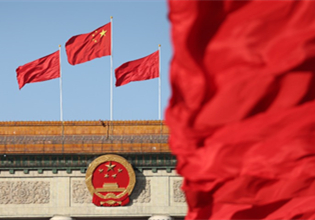'Green electricity' used in Inner Mongolia's computing sector reaches 58%
As of June 2023, the proportion of "green electricity" from wind and solar power used in Horinger in Hohhot city in North China's Inner Mongolia autonomous region reached approximately 58 percent, according to information from the first China Green Computing Power Conference that kicked off on July 2.
Horinger plays an essential role in China's strategic project that is expected to channel computing resources from the east to the west.
The computing industry is a highly energy-consuming sector. It is understood that the Horinger cluster has a server installation capacity of 950,000 units and a supercomputing capacity of 12 billion trillion calculations per second, placing it at the forefront of the country in terms of computing scale. Consequently, its power consumption is significant.
Guided by the "dual carbon" goals, Horinger is promoting the green development of the computing industry and advancing the supply of green energy.
Currently, Horinger is supplied with electricity through the western Inner Mongolia power grid. This power grid provides a continuous supply of "green electricity" from wind and solar energy, bringing cheaper electricity prices.
In addition to connecting to the grid for "green electricity," Horinger is also accelerating the construction of green energy generation projects.
Xu Yanguo, deputy director of the administrative committee of Horinger New Area, stated that the demonstration project for green energy supply to the data center cluster in Horinger had been approved.
This project includes the construction of 300,000 kW of wind power, 60,000 kW of photovoltaic power, and 35,000 kW of distributed new energy. Once completed, the direct supply of green electricity to the Horinger data center cluster is set to account for over 67 percent, resulting in an annual reduction of more than 1.8 million metric tons of carbon dioxide emissions.



 Print
Print Mail
Mail





